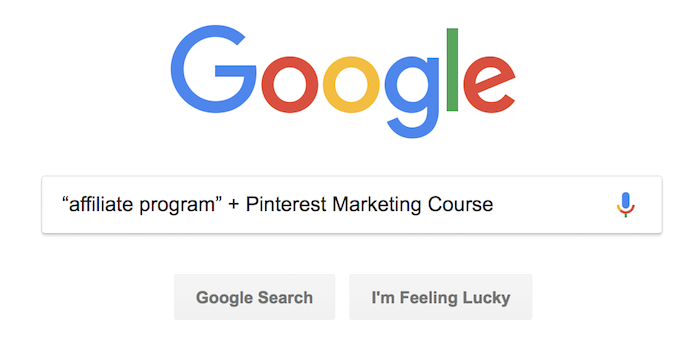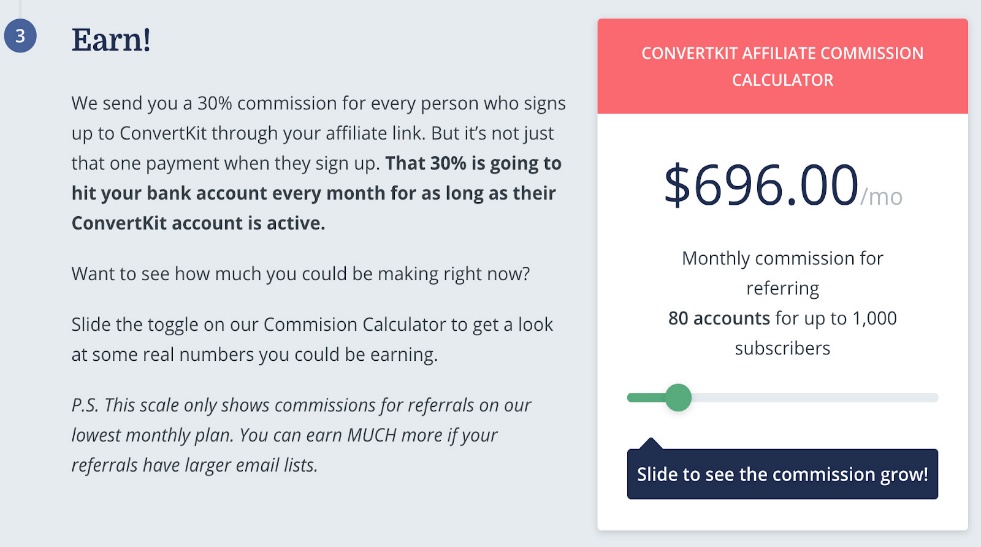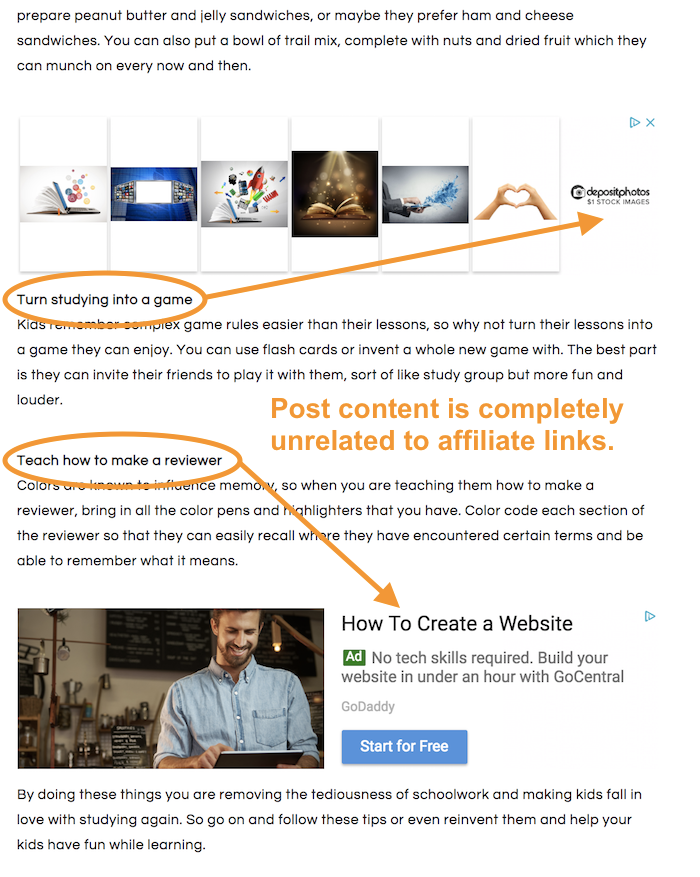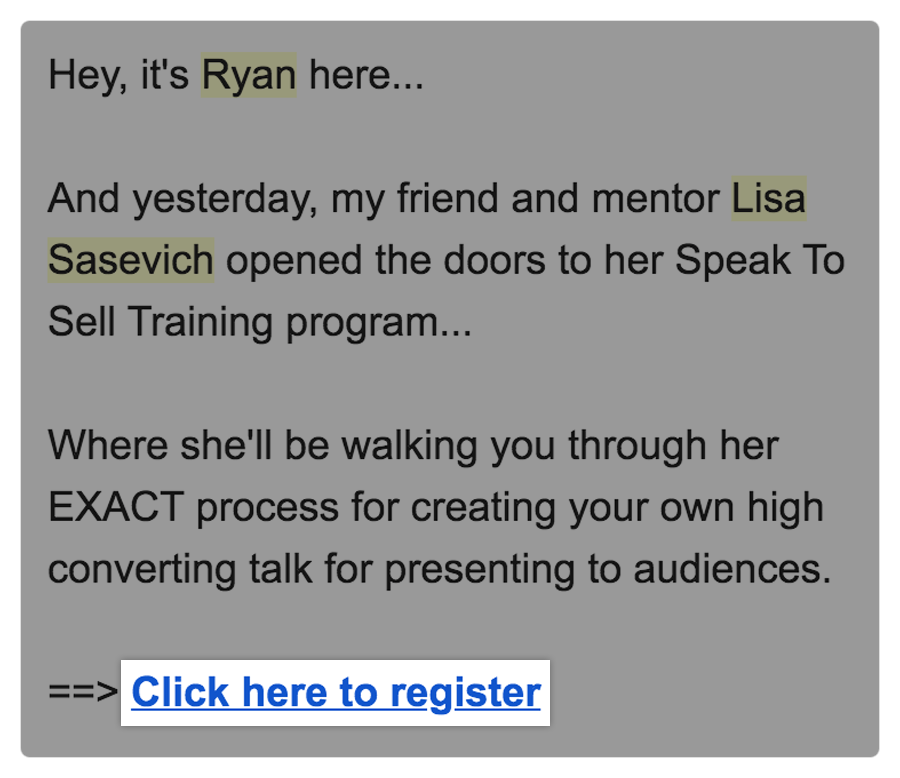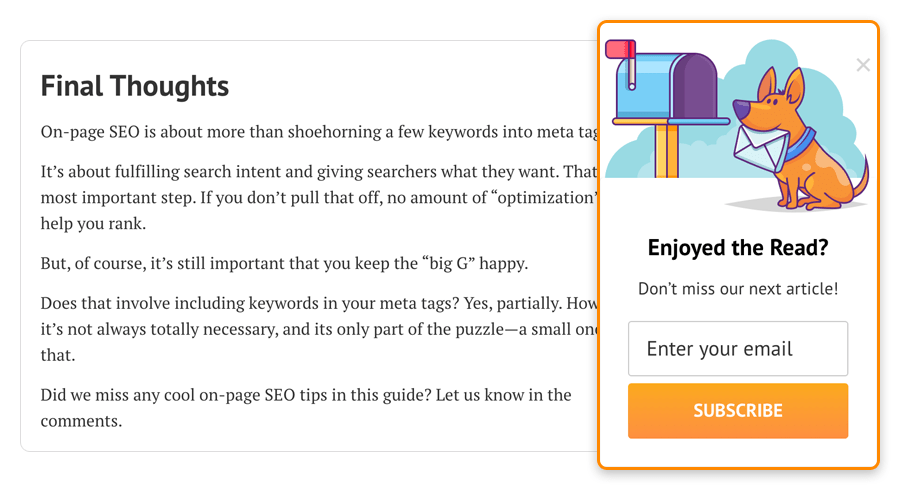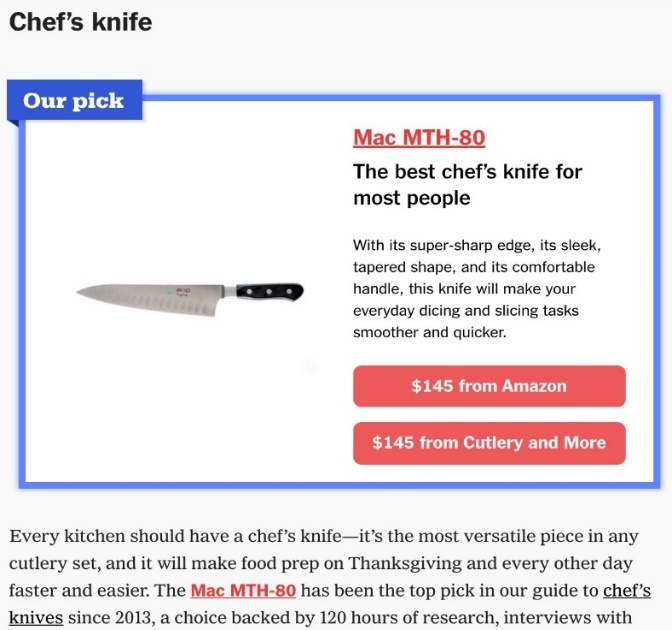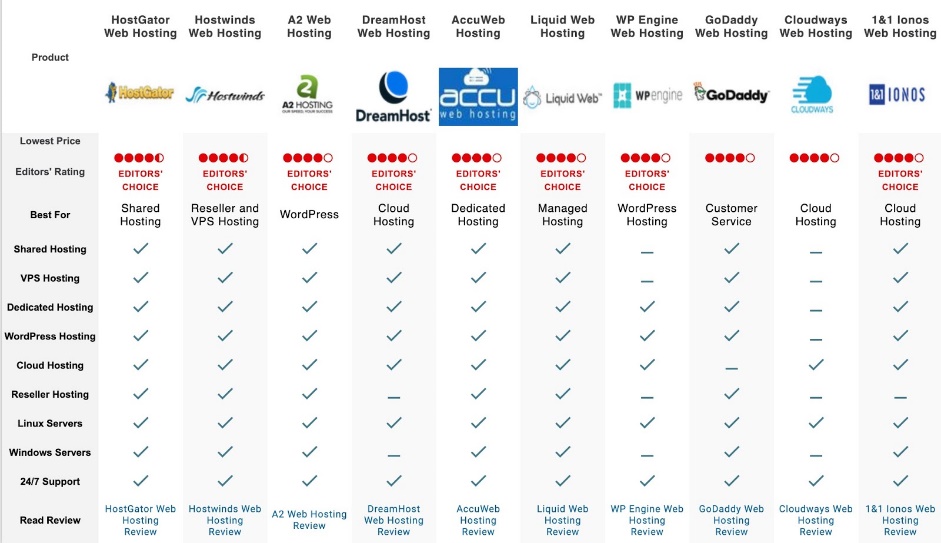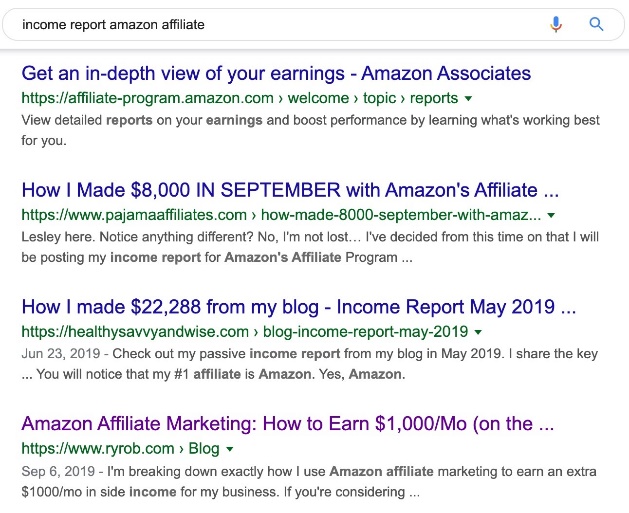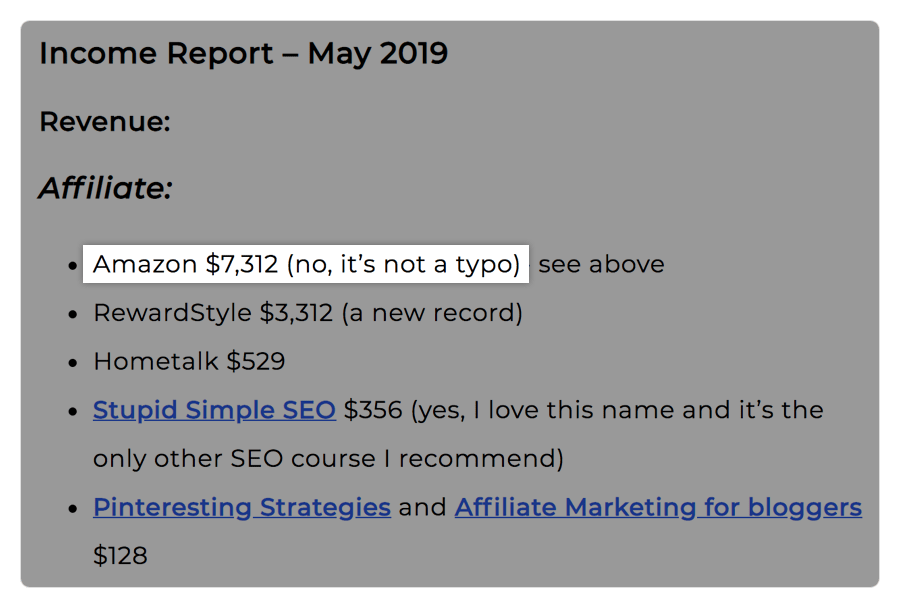Small but smart entrepreneurs always look for ways to increase their income and grow their business. Finding an alternative source of income is another way to take things to the next level. And if you are looking for a source of passive income, affiliate marketing is here to be your easiest option.
Using an affiliate program, you promote other people’s products and earn a commission. Sounds interesting? Yes, it is.
Affiliate marketing is a unique technique of earning commission without making your product. Here, affiliates promote the products or services of another person or company, in exchange for a commission on product sales, and the sales are tracked via affiliate links.
In this case, affiliates let product owners increase their sales by allowing them to target the same audience.
If you have a product and the desire of increasing its sale, you can offer promoters an incentive through an affiliate program. On the other hand, if you want to make money without having a product of your own, then you can be an affiliate marketer by promoting a product that you feel has value and can earn an income from it.
For bloggers, it’s the easiest way to earn money. Because you just have to find a product or service that matches your content, promote it to your readers, and earn a part of the profit on each sale.
Affiliate marketing is simply recommending a product or service on a blog, website, or any other social media platform. Like, if you are a sports blogger, you can recommend sport shoes or jerseys on your blog. Because these products will likely attract your audience easily.
And each time someone purchases through the unique link associated with your recommendation, you, the affiliate, earn a fixed amount of commission. This can become a crucial part of your business by letting you make a healthy income.
How Does Affiliate Marketing Work?
The marketing responsibility of a product gets divided among different parties in the case of affiliate marketing. The three parties which are bound to get involved to make this work are:
- The Merchant
- The Affiliate or Publisher
- The Consumer
(Image source: CJ)
The Merchant:
From a solo entrepreneur to a large enterprise, anyone can be a merchant or retailer with a product to market. Because this is the party that creates the product. The product can be an object, like cookware, or a service, like makeup tutorials.
As it’s the brand, it’s not necessary for the seller to be actively involved in the marketing, but they also can be the advertiser and earn profit from the revenue sharing associated with affiliate marketing.
The Affiliate:
The party which markets the product to potential consumers in an appealing way is the affiliate and it can be an individual or a company.
In other words, the affiliate joins an affiliate program, looks for reputable affiliate products to promote, and then shares those products with his/her audience. It’s important to persuade the consumers and convince them to purchase the product. If the consumer ends up buying that product, the affiliate receives a fixed portion of the revenue made by the sale.
Different affiliates have a different type of audiences and every affiliate has a specific audience to attract. It helps the affiliate in attracting the consumers who are most likely to act on the promotion.
The Consumer:
When consumers buy the product, the revenue is shared between the merchant and the affiliate. Often, the consumer might not know the affiliate marketing infrastructure behind their purchase.
As the affiliate’s share of the profit is included in the retail price, the consumers don’t have to pay more for the product.
Though the consumers are a very important party, they will complete the purchase process and receive the product as normal and their purchase won’t get affected by the affiliate marketing system.
Affiliate marketing is a bit technical, but the actual mechanics run in the background, thanks to affiliate program software. Let’s take a look at the process:
- After joining the program, the affiliate gets a unique ID and a specific URL to use to promote the merchant’s product.
- The affiliate adds the link in their blog content and/or in their email marketing efforts and invites the readers to click on it to find out more. When the link is added, a cookie is placed on their computer to identify the affiliate.
- When a buyer/consumer clicks on the link to visit the affiliate partners’ site, the cookie ensures that the publisher gets credited with the referral sale.
- At the end of each payment period, the commission is paid to the affiliate.
The Network (part of the equation):
In many cases, there is a fourth party involved in the equation, and it’s the network. Because sometimes there’s a need for a network that works as an intermediary between the affiliate and the merchant.
While promoting an online course that someone has created and you just have arranged a direct revenue share with them, you can let a network handle the payment and product delivery.
Moreover, the affiliate network has a database of lots of products, out of which the affiliate marketer can choose which to promote.
When I am saying network, I meant click bank, CJ Affiliate, Amazon etc.
What to Consider Before Becoming an Affiliate Marketer
Affiliate marketing certainly has some amazing advantages, but without training, that doesn’t mean you should jump in.
You’ll need to do a bit of planning and be mindful of the possible disadvantages to ensure that your work as an associate is not wasted.
We’re going to speak in more depth about some of those factors later. Here is, however, a short description of what you will need to do:
- Find the right niche: Your niche defines the subject matter of your platform and, by default, what kinds of goods or services you’re going to promote. As such, it’s vital to find a niche that is both comfortable and potentially lucrative.
- Understand how to disclose your affiliate links: It is imperative that you let visitors know that there are affiliate links on your blog. Affiliate ties, after all, fall under the Federal Trade Commission’s guidelines. Plus, being transparent (not to mention sales) is a smart way to boost trust in your website and business.
- Understand that being an affiliate is not ‘selling out’: You’re nothing but a pawn in their marketing strategies by advertising the goods of other firms, right? Although this is believed by some people, it is not valid.
A key feature of most popular affiliates is that they provide honest and insightful content to go along with their connections. There’s no need to bend the facts or link your name to poor-quality goods since you decide what to endorse.
- Be patient. Lastly, affiliate marketing seldom contributes to success overnight. Instead, slowly generating traffic and creating an audience typically takes a lot of time and effort. If you’re starting with a new or low-traffic location, this is particularly true. It’s vital that you don’t expect fast results, and are prepared to do the job you need to build your website and commissions.
4 steps to becoming an online affiliate marketer
As an affiliate marketer, you are here to give valuable insights to our audience about a product they were already thinking about buying, and in exchange for that, you are earning a commission.
Step 1: Review products in your niche/ Choose your niche
Before choosing your affiliate product, invest both time and money in researching, and make sure that your audience can relate to it. It’s one of the most important things to find your niche.
If you are a food blogger or have a YouTube channel about cooking, promoting a hair straightener won’t be a great idea. Because your audience will know that you are reviewing or promoting the product just to earn money.
On the other hand, if you review a frying pan or any other cooking utensils, your audience will be interested to buy it.
And never recommend or promote such products that you don’t like or won’t recommend to your dear ones.
OPTION #1: Promote Products You Already Have Experience With
When you choose your affiliate product, you should be confident and knowledgeable about the product. Thus, you’ll be able to share your story or firsthand experience about the product with your audience. Because you are supposed to help your audience find the best product and get the same result you got.
Suppose you got highly benefitted by a course on Coursera that your audience could also get benefit from. Then it makes sense for you to promote such a product and share your experience.
Make a list of products you’ve used so far and got the best results from. Then take a look at the list and mark only those you are excited to promote as an affiliate.
The next step for you is to see if those products have an affiliate program. You can easily check it by using Google and if you find an affiliate program, join it. But if you don’t, email the merchant and ask because it’s always better to propose first.
(Don’t be upset if you don’t have an existing product you love which has a great match for your audience and offers an affiliate program. Because there is also an option for you.)
OPTION #2: Find Products Via an Affiliate Network
As mentioned before, if you don’t have such a product you know about, you can find your affiliate products through the affiliate network. But this option requires more investment of time and money than the first option.
ClickBank, CJ Affiliate, eBay Partner Network, ShareASale, and the Amazon Associates program, etc. are some of the most reliable affiliate networks. Some of these networks will help you by assigning you an affiliate manager.
As Amazon has one of the largest affiliate marketing programs, Amazon products, is the easiest way to get started for a beginner. By becoming an Amazon affiliate, you can start your journey as an affiliate marketer and then scale to other types of offers.
Step 2: Find affiliate programs to join
Everyone looks for the highest paying affiliate programs which go well with their audience but finding that favorable one is a bit tough. The commission rate depends on the company and the type of item purchased. You can earn from 5% to 50% of the sale depending on your skill.
There are three types of affiliate programs:
A. High-paying, low-volume affiliate programs
These affiliate programs are the high paying ones which have the product of less appeal. Let me give you an example for your understanding.
ConvertKit is an email marketing software that has an affiliate program with a 30% commission rate. So, if you send 80 paying customers to their website, you can earn almost $700 per month.
Siteground is a web hosting platform and its affiliate program offers a commission structure of high payouts.
B. Low-paying, high-volume affiliate programs
These affiliate programs have products with mass appeal but low payouts.
For example, Amazon’s affiliate program has a commission rate of 7% to 1% and because of its wide product range, it usually offers tons of products to sell. You can earn up to 7% commissions on almost all beauty products Amazon sells.
You’ll have to drive a large amount of traffic for making money from these types of affiliate programs.
C. High-paying, high-volume affiliate programs
These affiliate programs are for the products with mass appeal and also pay high payouts.
Credit cards can be an example of it. As everyone needs a credit card now, and most people stay with the same company for years. The companies contact affiliate marketers with lots of expertise to attract new customers.
You don’t need to know the details just to get started but be aware that these programs exist.
How to decide which affiliate programs to join
If your targeted audience is the consumers, you can choose the second model of higher sales volume and low commissions.
The high-paying and low volume model is good for attracting a business audience. The most popular programs for software and web hosting are shown below:
(Above is the screenshot of a famous blogger)
The only thing needed to find any affiliate program and its application form for the program is just a Google search.
If you have a product that you like and would like to promote it without any public affiliate program, you can always reach out to the company and ask them for building an affiliate relationship with you.
Step 3: Start Promoting Your Chosen Affiliate Offers
You ultimately earn the money when you become successful in making your consumers buy the product, right?
It’s when all your hard work pays off. For that, you have to put your trustworthy and reliable recommendation to your audience.
This is where you get the chance to show your creativity.
If you look at the picture, you’ll see that the blogger promoted such a link that has no connection with the writings. But mostly, the successful affiliate offers don’t look like that.
Here’s what to can do instead and get an idea about what marketing channels to use:
OPTION #1: Create a Resource Page on Your Blog
For example, SmartBlogger is a blog traffic boosting platform and it has a different section named ‘Tools’ where it promotes different products.
It has also organized those products according to different types of readers and their needs. Also, brief information about the products has been included and explained why those products would be helpful to them.
Option #2: Create and Promote Custom Content
The backbone of your affiliate promotional work is the content marketing strategy. You can write reviews and definitive content on related topics.
A) Write Reviews: As an affiliate, you can write detailed or brief reviews of products, courses, or books. In your reviews, you can compare products of the same category according to their features or focus on a single product.
The first approach lets you compare the competing products and builds more trust among your audience. You can also create a review site if you like to review multiple products where you organize all your review contents and affiliate offers.
B) Write Definitive Content on a Related Topic: By writing a definitive, detailed post on your site you can educate your readers and then work to get its ranking in the search engines.
In SmartBlogger, there’s a section called Find Writing Jobs and it is a step-by-step guide for people who want to be a freelance writer. People looking for online jobs can get helped by it and by adding one of their courses for writers they are promoting the course.
Yes, you are supposed to educate your audience and make them buy products one way or another. But always keep in mind that your blog is not a sales page. Because if it seems so, you won’t be able to gain your audience’s trust and be successful in affiliate marketing.
Step 4: Comply with Legal Requirements
The Federal Trade Commission (FTC) of U.S. requires that you let people know that by promoting this product you’ll earn a commission. I think, if you are transparent with your audience, they’ll appreciate and support it.
So, when you share an affiliate link you may let your readers know that the link is an affiliate link. But this the reader will know that you are earning commission from the product. And don’t forget to assure them that you wouldn’t recommend any product without using them yourself or were confident about it.
For example, here’s how SmartBlogger does it:
How Do Affiliate Marketers Get Paid?
When someone gets to know about affiliate marketing, the first question that pops in their mind is how does an affiliate get paid?
It’s always not necessary for the consumer to buy the product for the marketer to get paid. It depends on the affiliate program how the affiliate’s contribution to the seller’s sales will be measured.
The affiliate marketer might get paid in various ways:
1. Pay per sale
In this, if the consumer ends up buying the product through the marketer’s affiliate link, the merchant pays the affiliate a percentage of the sale price of the product.
2. Pay per lead
This one is a little complex system. In pay per lead affiliate programs, the affiliate marketer gets paid if he/she becomes successful in persuading the consumer to visit the merchant’s website and complete the desired action. These actions could include filling out a contact form, signing up for a trial of a product, subscribing to a newsletter, or downloading software or files.
3. Pay per click
This program works as an incentive for the consumers to shift from their marketing platform to the merchant’s website. In other words, the affiliate has to entice the consumers to the level that they will lead to the merchant’s website from the affiliate’s site. The affiliate is paid by the rise in web traffic.
What are the Top Affiliate Marketing Trends of 2020?
1. Improved Affiliate Attribution & Reporting
Now, there are such affiliate programs that run with last-click attribution. The term ‘last-click attribution’ means that the affiliate who received the last click before the sale got 100% credit, gets a percentage. Affiliate programs are evolving day by day and providing new attribution models, reporting features by which you get to see how individual marketing tactics are working together in it.
For example, in a paid social campaign X generated the first click, Y got click 2, and Z got the last click. That’s how the merchant can get to see the full structure of affiliate commissions. So, Affiliate X gets a percentage of the credit for the sale, even though they didn’t get the last click.
2. Highly-Targeted Influencer Niches
As it’s 2020 and due to the pandemic life has got more digitalized than ever. Almost everyone in this world now uses social media platforms and follows the influencers.
These influencers can leverage their niche and use their audience for affiliate marketing success because now, consumers use long-tail keywords and search for very specific products and services. Though the influencers may not send advertisers huge amounts of traffic, the audience they send is commendable.
3. Personal Data Collection Regulations
Use of personal data across the EU is governed by a set of regulations named The General Data Protection Regulation (GDPR).
Now, it is forcing affiliates to obtain user data through opt-in consent (updated privacy policies and cookie notices), even though they aren’t located in the EU.
This new regulation also reminds you to follow FTC guidelines and disclose the fact that you are receiving affiliate commissions from your recommended products.
Affiliate Marketing Strategies for 2021
1. Only recommend extremely familiar products
Gaining the trust of your audience is the most crucial part of affiliate marketing, and the fastest way to lose it is to recommend such products that either you haven’t used before or aren’t good enough for your audience.
As mentioned before, do not try to sell a product or say ‘buy this product’ because you are here only recommending the product, not selling it. The more you make a quality-consistent-content and helpful recommendation, the more you build trust with your audience.
2. Promote products of different merchants
And never forget the saying, “Don’t put all your eggs in one basket”. When you only promote one merchant’s products, you get stuck with their commissions. But it’s important to have diversification in your product range. Work with as many different merchants in your niche as you can. That’s how you’ll get to promote a wide range of products.
By letting you promote different products, this affiliate marketing strategy will also help you diversify the number of commissions you make. It’ll also create a steady stream of income when you are building an affiliate website.
3. Constantly test and optimize your conversion rates.
Suppose, X has a promotions page where he promotes a particular product via affiliate links. If he currently gets 2,000 visits per month and he has 40 referrals. So, the conversion rate is 2%. If he wants to get 100 referrals, here are two options- (1) try to get 3,000 more visitors or (2) increase the conversion rate to 5%.
Which one will you prefer? If you just increase the conversion rate by 3% the whole game will be changed.
How?
It can be done just by having landing page optimization and a conversion rate optimization strategy. It’s easy to get better results with less effort if you know the right strategies. In this case, you’ll just have to test and optimize your website from time to time.
4. Focus on your affiliate traffic sources.
You should always monitor your traffic sources and your audience. This will let you know how you need to customize your product recommendations and help your audience get the information about their desired products.
It will also help you get you a targeted audience.
‘Google Analytics’ is such an option for you to monitor your traffic source data. You can use it to view things such as time on page, time of day, geolocation, age, gender, devices (mobile vs. desktop), and so on. That’s how you get the chance to focus your effort on the highest converting traffic and increase your affiliate sales.
PPC Advertising: a helping hand to grow your business
Once you start earning enough from your affiliate marketing business, you can start to look for paid advertising. But one thing you need to remember is ‘only do this once you have a way of getting your invested money back’.
Conversions are all that matters here.
By using PPC advertising, you can get people to sign up for your webinar, grow your email list, make more sales.
For example, if you search for “learn affiliate marketing” in Google, the ad of Tapfiliate comes first because they are advertising for this keyword and promoting their site. So, the first step can be using keywords related to learning about your product or topic.
Right under Tapfiliate’s ad, there is an ad from Udemy which is a course platform and it can be considered as a competition to Tapfiliate.
Udemy provides courses on learning about affiliate marketing, so it’s really easy for them to get in front of someone else’s audience. So, when you are trying to target people who are looking for a manual to guide them through the ways of affiliate marketing, it’s also necessary to improve your SEO.
The number of people who buy products directly using your link after reading your review is naturally low, so imagine paying for these readers.
You only earn a few dollars depending on your product’s price, so the margin you can spend on ads is not that large.
Most of the time, you’re best-off promoting sign-ups to your email list.
Getting people to sign up for a webinar with ads is the most efficient way to go.
You will succeed in 3 ways:
- As they are going to be on your email list, you’ll be able to contact them again
- A chance of their attending your live webinar and buying the product is there
- You can put them on an autoresponder email sequence, and it will encourage them to buy
For instance, John Lee Dumas, from Entrepreneurs On Fire, sometimes runs webinars and puts them on his homepage.
As soon as you enter into the webinar, he as well starts sending you a series of automated emails.
He gives you other courses and free resources on those newsletters, such as a webinar course, where you can learn how to do webinars and make sales.
You’ll be given 10 email lessons for several days if you are opt-in. In the end, he invites you to buy a more detailed webinar course.
You’re introduced to his more comprehensive and informative course after you’ve already learned a lot about webinars, which will teach you even more.
He also shows a walk-through of the course behind the scenes, so you get a sneak peek.
When he knows how many individuals from the autoresponder series will end up purchasing the full course, he can easily determine how much he will spend on advertising to get individuals to sign up for the course for the webinar or webinar.
Therefore, you have many chances of getting your customers to purchase your product with this approach.
After the sequence of autoresponders, on the webinar, and from future emails, they have a chance to purchase.
When your sales start to come from multiple places and start to expand, by only pushing traffic to the sales mechanisms that already work, you can blow up your company with paid ads.
Some steps towards a successful affiliate marketing
1. Create great content
To be a successful marketer, it’s important to provide quality content to your audience through your website or blog. Because these contents provide your site with visitors and the more viewers your site gets, the more your credibility increases.
Using eye-catching headlines, engaging with the audience, maintaining consistency in making content, etc. these are the few tips you should remember.
You need to build high-quality content where your affiliate links match naturally if you want your affiliate site to succeed.
An example here. 100 + popular people were interviewed by Tim Ferriss and asked them this question: What purchase of $100 or less has most positively impacted your life in the last six months (or in recent memory)?
In a blog post, he published the responses and included affiliate links to the products mentioned:
Judging by the feedback, it was enjoyed by his fans.
When designing content for your affiliate site, this is what you would imitate. Don’t only blindly curate the best sellers of Amazon’s goods. To make sure your content solves the visitor’s dilemma, go the extra mile.
What? How? If you’re doing reviews, actually buy and test the stuff. This is what the Wirecutter did, which clarifies their achievement.
You can always start with what you have at home if you don’t have money to buy every single thing. For starters, you could generate feedback on the gadgets you own if you had a tech blog.
2. Drive traffic to your affiliate site
Okay, you have made great content. The next move is to get more people to read it so that your affiliate links are clicked on.
Here are some techniques for traffic to consider:
- Get active on social media:
Social media platforms are great traffic drivers. From the four platforms – Facebook, Instagram, Twitter, and Pinterest, you have to choose the one(s) your audience are interested in. In the case of visual posts, Instagram and Pinterest can be used. But if your blog or website is business-oriented, Twitter and LinkedIn are the more effective ones.
When it comes to engaging your audience via social media, being consistent is the first step. By sticking to a fixed posting schedule, you’ll be able to grow a steady number of followers. And try not to target everyone but a particular audience and again, be consistent.
- Guest post on industry blogs:
After having your blog or website established, you can offer to provide guest posts in exchange for a link back to your website.
You should find such guest posts that have high traffic volume and you’ll be able to drive traffic to your site. And this can also help you in building a targeted audience.
- Search Engine Optimization (SEO):
In search engines like Google, SEO is the practice of optimizing pages to rank high.
You’ll get steady and passive traffic for as long as you can rank high in the search engines for your target keywords. SEO is about, on the easiest level:
- Knowing what your targeted audience is looking for;
- Creating contents such as blog posts, product pages, etc. regarding those topics;
- Taking care of the technical stuff like link building to push these pages higher in the search engines
Learn the basics in this video:
https://www.youtube.com/watch?v=DvwS7cV9GmQ
Search Engine Optimization is a procedure that upgrades your position on Search Engine Results Pages (SERPs) – this makes you more noticeable to potential traffic. Moreover, a higher ranking on SERP also raises the possibility of your site being clicked on by search engine users.
While there is an array of SEO methods, there are a few methods that have a greater effect on ranking variables than others. These include:
Long-tail keywords: Keywords that range from two to five words in length will allow you to rank higher because of less competition.
Quality backlinks: The more websites that have links to your website, the higher your authority and reputation would rank.
Comprehensive content: On Google’s SERPs, longer content appears to rank higher, with the average first-page result containing 1,890 words.
- Make an email list:
Email marketing is a common way of driving traffic and it can be very useful to keep your audience engaged in your site. By building an email list, you can promote new products. For example, a monthly newsletter with your affiliate links can be sent highlighting the special offers run by you.
As it’s an easy way to drive traffic, you can use tools such as MailChimp to assist you in this process.
Email lists allow you to connect at any time with your readers.
Use them to tell fans about fresh content and keep them coming back for more on your pages. This leads to more views and profits for affiliates.
You can also explicitly send out affiliate email promotions to your list:
You need to convince the readers on your site to sign up to create an email list. That means getting something worthwhile to sell.
For example, at the end of every article, you can show a slide-in box:
On their navigation bar, some websites like Gear Patrol also have a” subscribe “link:
But there are other ways to do this. A free eBook, an email course, etc. can also be offered. All you need is some imagination.
- Paid traffic
This is where you pay for your site’s traffic. Using PPC ads, you can do this. The benefit of paid traffic is that you receive traffic the moment you start paying. There are some downsides, however.
Running commercials will first dig into your income. For advertisers, it’s very common to lose money before they make it … if they ever do.
As for how long it takes to maximize a paid traffic campaign, you need to be rational.
Secondly, your traffic will stop once you stop paying for advertisements.
Generally speaking, if you’re part of a high-paying partner network and can make the numbers work, ads are a perfect traffic strategy.
But if you’re totally new to paying marketing and have no budget for marketing (or work with lower commission services such as Amazon Associates), then it may not be such a great idea.
3. Get clicks on your affiliate links
Just because you have an excellent piece of content doesn’t mean that your affiliate links will be clicked on by users.
You need to remember a few things.
- Link placement
If all of your affiliate links are at the bottom of the page where individuals rarely scroll, there are few and far between clicks.
In your introduction, on the other hand, make any other word a connection and your content would look glitchy.
You need to balance the location of connections with the other variables below.
- Context
Let’s assume that you wrote an article about the best kitchen knives for less than $50.
Your presentation should certainly not look like this:
“Today, I’m evaluating the best knives for chefs.”
The connections look out of place and look spammy.
More meaning will make this:
“Today, I’m reviewing three different chef knives you can buy on Amazon for under $50. These are, product X, product Y, and product Z.”
- Callouts
Using callouts such as buttons, tables, and boxes will help draw the attention of your readers and make the post skimmable.
For instance, whenever they share a top pick, the Wirecutter utilizes eye-catching boxes with product links.
A particular approach is taken by PC Mag and it uses a button comparison table:
4. Convert clicks to sales
Two conversions need to take place in affiliate marketing for you to make money. Clicking on a product listing is the first conversion.
You’re in control of this action 100 percent. To boost your chances of having the click, use the tactics above.
The visitor buying the commodity is the second conversion. The retailer manages the checkout in the case of affiliate marketing, and their rates of conversion are out of your reach.
The key is to play the game to your benefit and to search for merchants with well-converting systems.
Here are some ways of discovering them:
- Public income reports
If people from an affiliate program make good money, then the product may translate well.
How do you know if money is being made by people?
Look at records of public income where bloggers publicly announce how much money they earn from their affiliate deals.
On Google, you will find these papers.
For instance, you’ll see a few blog posts showing how bloggers have made money from Amazon Affiliates if you search for “income report amazon affiliate”.
Seems like one blogger made $7,300 in a single month from Amazon commissions.
You can also take a look at where her other affiliate revenue comes from if you’re in the same space, and potentially endorse the same items.
- Ask questions
Sign up, and ask questions if there’s not much information available about an affiliate program you want to join.
You may want to find out what their gross conversion rates are, for example, or a ballpark find of the monthly commissions of their highest earners.
This will help you find out if it’s worth supporting the affiliate program.
- Use your intuition
Often, with your gut instinct, it’s best to go.
If the program or product you’re trying out seems “off,” or if you will never recommend the product to a friend or family member, then don’t promote it.
Creating a plan to promote your affiliate offer
It can eventually become a source of passive income for affiliate marketing sales, but you still have to do some heavy lifting upfront. Your program’s effectiveness will depend on the accuracy of your analysis.
It’s best to get personal to build a positive rating. In your blog, social media post, or video, share your experience. Offer a candid opinion based on your experience with an awareness of the product if you are writing a personal review.
The more open you are, the more you will be real. When they believe they can trust you, people would be more comfortable following your advice.
In your affiliate marketing activities, trust is a crucial element, so individuals need to trust you enough to act on your recommendations. For example, to be a successful affiliate, it takes more trust for a $1,000 course than it does for a $30 t-shirt. The amount of trust you would need to make affiliate sales depends on the industry and the items you are recommending.
You can create confidence by restricting the number of affiliates you support, or by just being an affiliate for goods you use, and sticking to your field of expertise, beyond just sharing your experiences.
—Desirae Odjick, founder of Half Banked
Examples of businesses using affiliate marketing
Wirecutter
Wirecutter, a platform acquired by The New York Times in 2016 that promotes equipment and accessories from kitchen tools to travel gear, says before providing any recommendation, they do a lot of reporting and testing using their teams of specified journalists, scientists, and researchers.
BuzzFeed
As a gift guide, BuzzFeed Reviews started and grew into reviews in multiple product categories. What makes the site exclusive is that it covers diversified ordinary items, giving top picks at three different price rates. BuzzFeed’s reviews are quite detailed, which provides lots of value to the reader.
Final Thoughts
Affiliate marketing is a perfect solution for those looking to concentrate on performance-based sales options to gain control over their profits.
Working in partnership with a distributor, without thinking about creating their product or service, a motivated affiliate marketer would be able to earn a passive income from the comfort of their home.
Since the job’s success depends on the marketing skills of the affiliate, as either a primary occupation or a lucrative second job, it can prove to be a successful way to achieve the income goals.
A new frontier in marketing, affiliate marketing, is just waiting to be used as an elegantly straightforward method, through reviews, blogs, social media, webinar software, and other platforms.
Follow the guidelines and, one clicks at a time, you will be able to engage your audience, turn passive readers into engaged consumers, and increase your paycheck.
Affiliate marketing is the perfect solution for a newbie. Just start today.



